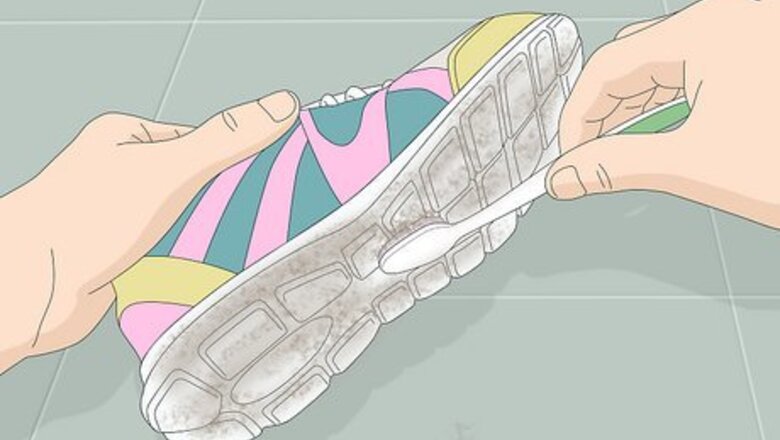
views
- Check the care label on your running shoes to see if you should hand-wash or machine-wash them.
- For hand-washing, scrub your shoes with a cleaning brush and soapy water. Pull out the laces and insoles to clean them separately.
- For machine-washing, put your shoes in a delicates bag. Run a gentle cycle using cold water and mild laundry detergent.
- Stuff your shoes with old newspapers and leave them out in a well-ventilated area so they can air-dry.
Hand-Washing
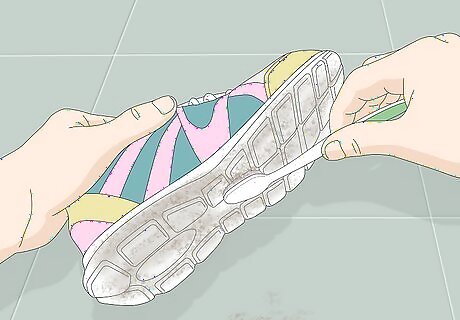
Scrub dried dirt on the soles with a cleaning brush. It’s a lot easier to remove as much dirt as you can before washing your shoes so you don’t have to clean as big of a mess. Rub the brush over the soles to break up larger chunks of dirt and residue that are stuck on the surface. An old toothbrush works great for scrubbing the rubber parts of the shoe. If you have wet mud on your running shoes, you can either rinse it off with water beforehand or wait until it dries so it’s easier to brush off.
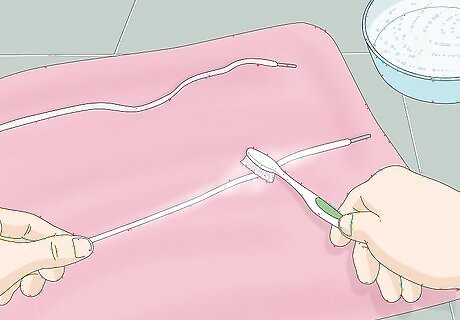
Pull out and clean the shoelaces with soapy water and a toothbrush. Mix a few drops of mild laundry detergent in a bowl with warm water. Unlace your shoes and lay the laces on a towel. Dip the bristles of a toothbrush in the soapy water and gently scrub the laces to remove the dirt and stains. If your shoelaces have stubborn stains, soak them in a bowl of warm water with oxygen bleach stain remover before you scrub them.
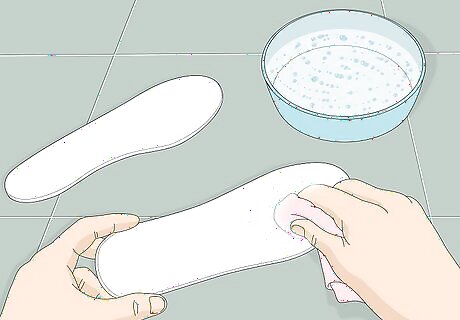
Wash the insoles with a microfiber cloth and soapy water. Pull the insoles out of your shoes and place them on a clean towel. Dip the corner of your cloth in your detergent-water solution and clean your insoles using circular motions. After you clean the tops of the insoles, flip them over to wash the bottoms. Focus on cleaning near the toes and heels since that’s where stains and odors are the most noticeable.
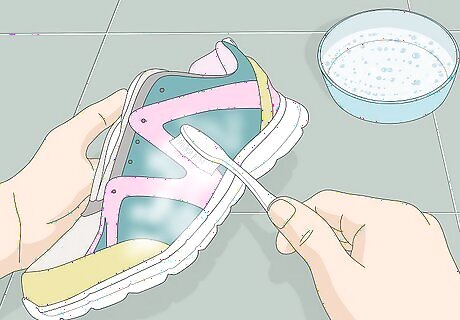
Clean your shoes with soapy water and your cleaning brush. Dip the bristles of your cleaning brush in your detergent solution, and gently scrub the entire surface of your shoe. Focus on areas that still have dirt, stains, or other residue until you completely lift them up. Be sure to work the detergent into the fabric to get rid of dirt odors stuck deep in the fibers. If there are scuffs on the soles, try rubbing them with a melamine sponge.
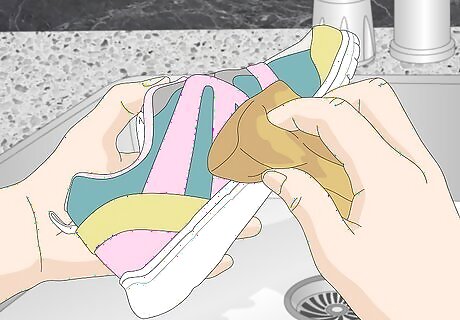
Rinse your shoes, laces, and insoles with a sponge soaked in water. Wet a clean sponge with fresh water, and rub it in a circular motion on your shoes to get rid of the residual detergent. Rewet your sponge as it dries out, and keep working until you flush out all of the suds from your shoes, insoles, and laces. Run your finger over your shoes occasionally while you’re rinsing them. If you feel any suds or soapy film, keep wetting your shoes with the sponge.
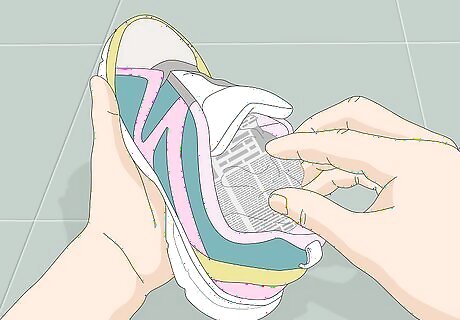
Stuff your shoes with crumpled newspapers. Crumple up a few pieces of newspaper into a tight ball and push them as far as you can into your shoes. Not only will the newspaper help your shoes retain their shape, but it will also help eliminate odors and absorb moisture so they dry quicker. Newspaper ink could leave stains or marks on white shoes. Use a microfiber towel inside white shoes instead.
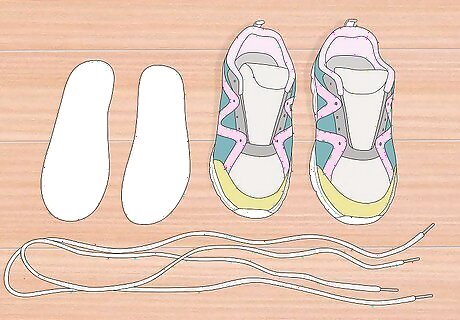
Leave your shoes, laces, and insoles in a well-ventilated area to air-dry. Keep your laces and insoles separate from your shoes while they dry. Put your shoes in a room with a fan and leave them for a few hours or overnight until they’re completely dry. Avoid putting your shoes in your dryer or out in the sun since the heat could break down glue or foam in them.
Machine-Washing
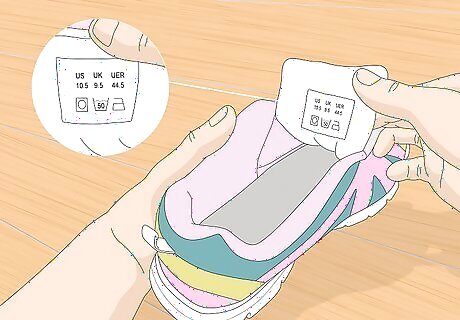
Check the label to make sure your shoes are machine-safe. While it’s usually best to wash your shoes by hand, running shoes that have a plain style may be safe in the washing machine. Find the care label underneath the shoe’s tongue and look for the washing instructions to see if you can machine-wash them. Running shoes made from materials like cotton, nylon, or polyester are usually safe in your washer. If you have expensive running shoes or aren’t sure that they’re machine-safe, err on the side of caution and hand-wash them instead.
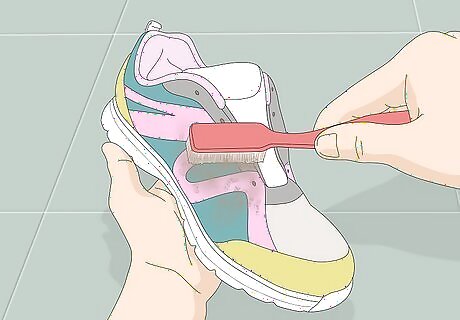
Wipe off excess dirt from your shoes with a cleaning brush. Scrub off dried or loose dirt from the surface with a dry cleaning brush, cleaning off as much dirt as you can from between the treads and on the soles. If you have trouble getting packed-in dirt, try scraping it out with a toothpick or old toothbrush.
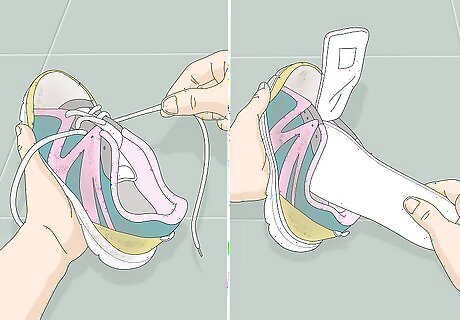
Remove the laces and insoles from your shoes. Undo the laces and carefully pull them out from your shoes. Then, take the insoles out from inside your shoes so they get cleaned more thoroughly.
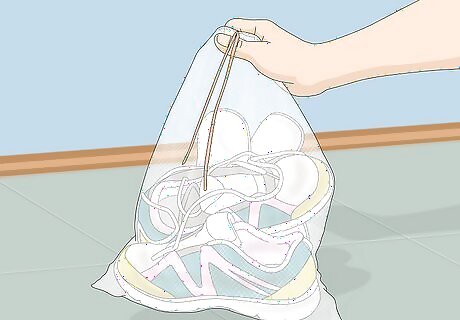
Toss your shoes, insoles, and laces in a delicates bag or pillowcase. Putting your shoes right in your washer could cause them to get tangled or damaged while it's running. Take all of the components from your shoes and zip them into a delicates bag or pillowcase so they aren’t loose inside the machine. If you have gel or custom insoles that aren’t made of fabric, wash them with soapy water by hand instead of putting them in your machine.
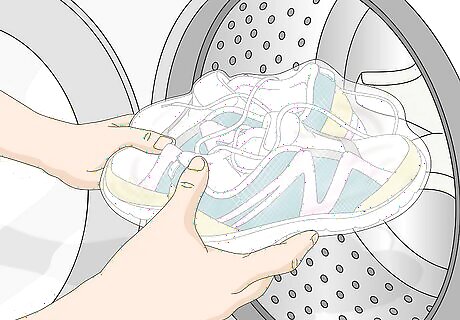
Put your shoes, insoles, and laces in your washing machine with old towels. Your shoes could make a lot of noise or get damaged as they bounce around inside your washing machine. Stuff 2–3 old towels into your washing machine before putting the bag with your shoes inside to add some cushioning and protection.
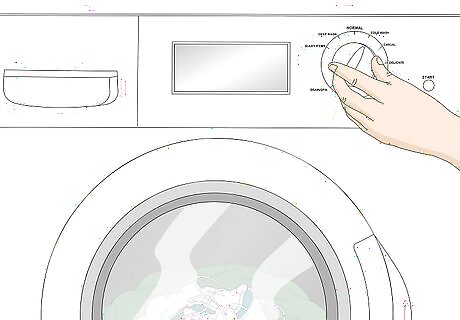
Run your washing machine on a cold gentle cycle with mild detergent. Pour the detergent into the dispenser or directly into the drum depending on your washing machine. Turn the machine to a delicate setting with cold water and let the cycle run completely. The delicate cycle makes your shoes less likely to get damaged. Avoid using warm or hot water since it could damage the glue holding the soles of your running shoes to the fabric.
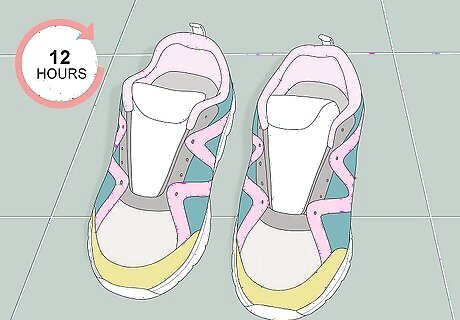
Stuff your shoes with newspapers and let them air-dry. Crumple up a few pieces of newspaper and shape them into balls that fit inside your running shoes. Push the newspaper balls into the toes of your shoe to help absorb the moisture. Then, set your shoes in a well-ventilated room with a fan and leave them to dry completely, which usually takes around 12 hours. If the label on your shoes says they’re dryer-safe, then it’s okay to put them in the dryer on the lowest setting.




















Comments
0 comment